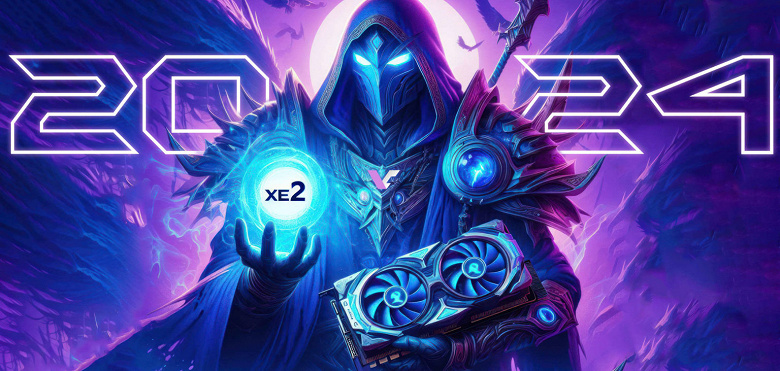
Intel Battlemage GPU: Gearing Up to Compete with GeForce RTX 50 in 2024
Intel’s Continued Focus on Next-Generation Graphics
Intel is steadfast in its commitment to launching its next-generation Arc graphics cards, codenamed “Battlemage,” in the upcoming year. Despite a history of shifting release schedules for new products, Intel’s latest roadmap reaffirms its plans for the Battlemage lineup in 2024. While no specific quarter has been indicated for the release, it’s unlikely that these GPUs will debut early in 2024, as detailed rumors or parameters about them are yet to surface.
Intel Battlemage GPU. Expected Competitors and Technological Advancements
Intel’s Battlemage GPUs are poised to compete with the likes of the GeForce RTX 50 series. Intel has hinted at incorporating new types of memory (potentially GDDR7) and enhanced hardware support for ray tracing in these GPUs. Raja Koduri of Intel previously stated that the new generation would continue to focus on mid-range cards with a TDP of around 250W, indicating that full-fledged flagship models might not be part of the initial release.
Intel Battlemage GPU. Technical Specifications and Features
- Release Timeline: Scheduled for 2024, with the high-end BMG-G10 GPU expected in Q2.
- Architecture: Based on the Xe² HPG Architecture.
- Cores and Shaders: 56 Xe cores, 448 XVE (Execution Units), each comprising 2 shaders.
- Memory and Cache: Likely to include 16GB of GDDR6X video memory and 112MB of cache, with speculation about the potential use of GDDR7 memory.
- Power Consumption: Up to 225W, focusing on mid-range performance.
- Advanced Technologies: Improved ray tracing performance, updated DeepLink capabilities, and new machine learning technology.
- Manufacturing Process: Utilizing TSMC’s 4nm process node.
Market Positioning and Expectations
Intel’s Battlemage GPUs are expected to further solidify the company’s position in the dedicated graphics card market, challenging established players like NVIDIA and AMD. The focus on advanced memory types, enhanced ray tracing, and new machine learning technologies indicates Intel’s commitment to delivering competitive and innovative solutions in the graphics arena.

